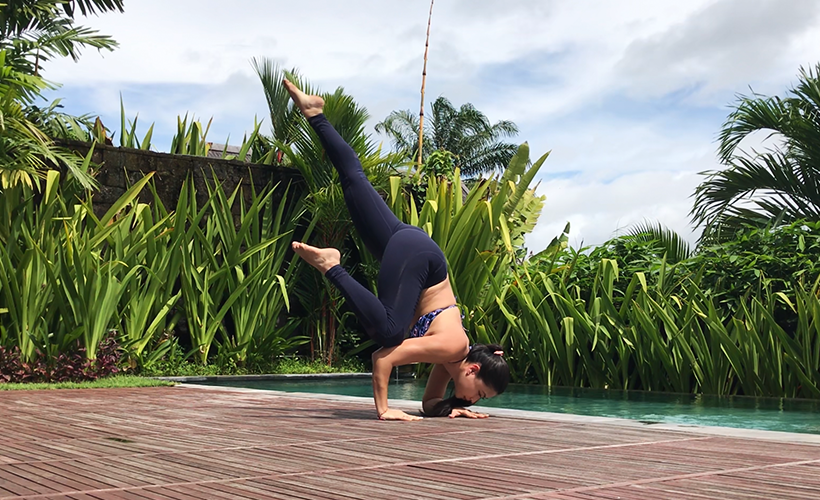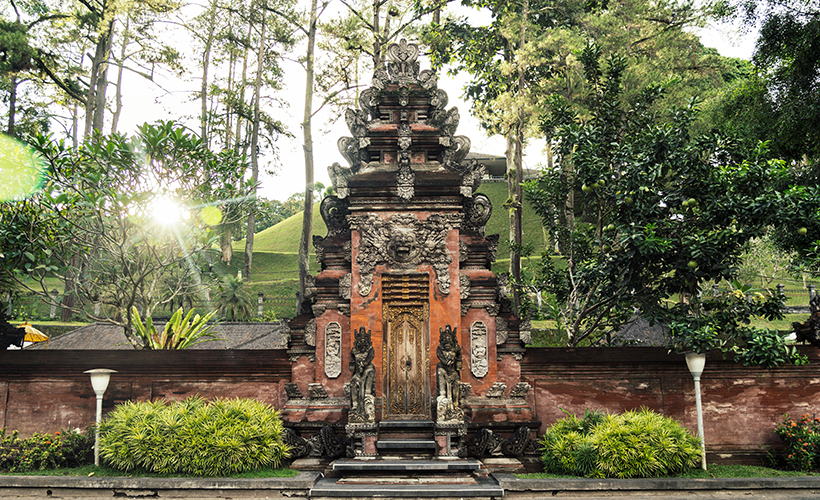
It is said the springs that feed Pura Tirta Empul – also known as The Holy Water Temple – in Bali, Indonesia were created by the god Indra. It is also believed that these waters have healing properties, hence why people from all over visit this beautiful temple and bathe in the holy water.
Exploring the temple
Tirta Empul is about 30 minutes from Ubud, in the village of Manukaya. As you come in through the entrance, you will pass under a Balinese gate called a Candi Bentar to the outer courtyard, Jaba Pura. The Jaba Pura is paved with worn stone. Three walls protect the courtyard while the fourth side has a large, open-air pavilion.
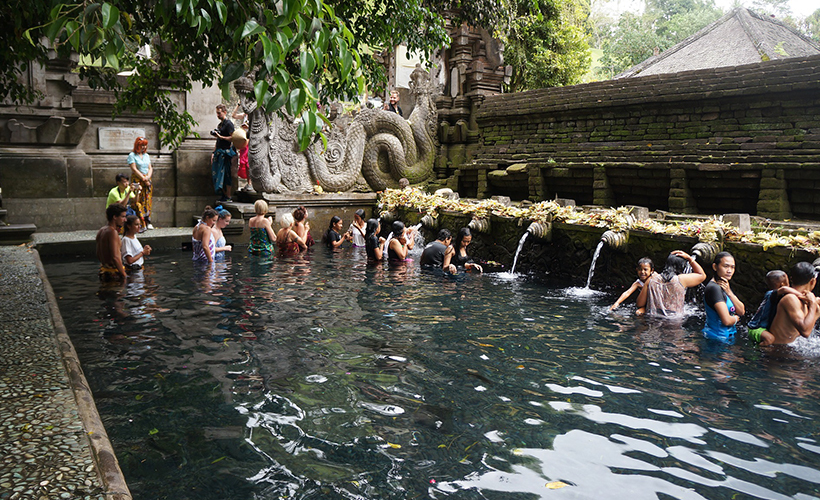
The central courtyard – Jaba Tengah – is the temple’s main area with a stunning water feature. Water from a pool inside the temple sprays out through 30 waterspouts into two sacred pools.
Behind the pools is the Jeroan. It is an inner courtyard where visitors come to pray. The springs that feed the pools are at the front of the courtyard with large, colourful Hindu shrines looking over them.
There is a large koi pond near the exit of the temple. This space is enclosed by four walls and has massive koi calmly swimming in the cool water. It is a nice place to conclude your visit to the temple.
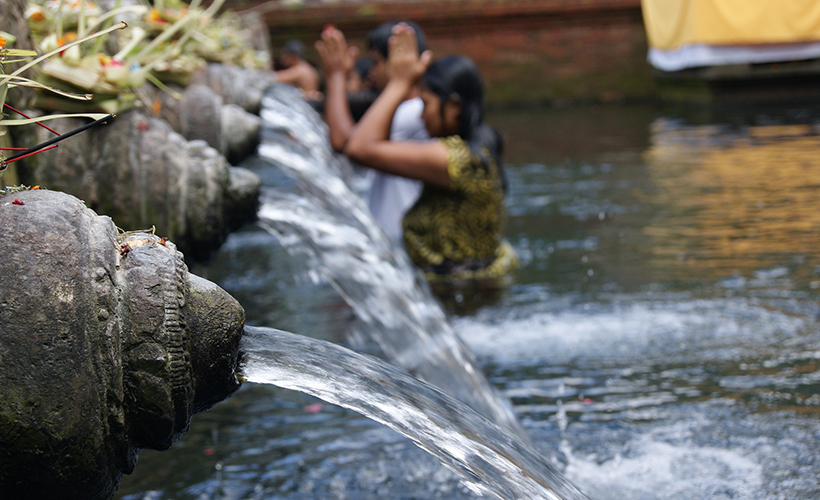
Paying respects
Sarongs (or kamen wraps) should be worn around your lower body while in the temple complex – you can rent one at the entrance if you do not have your own. You should also wear a sash around your waist.
Women are not allowed to enter any temples while on their period. Bathing and purifying in the holy waters is a formal ritual observed by pilgrims and devotees. It is important to be respectful and ask your guide or a temple authority whether you can participate and how it should be done. There is also a sign with the rules nearby that explains the rules and customs.
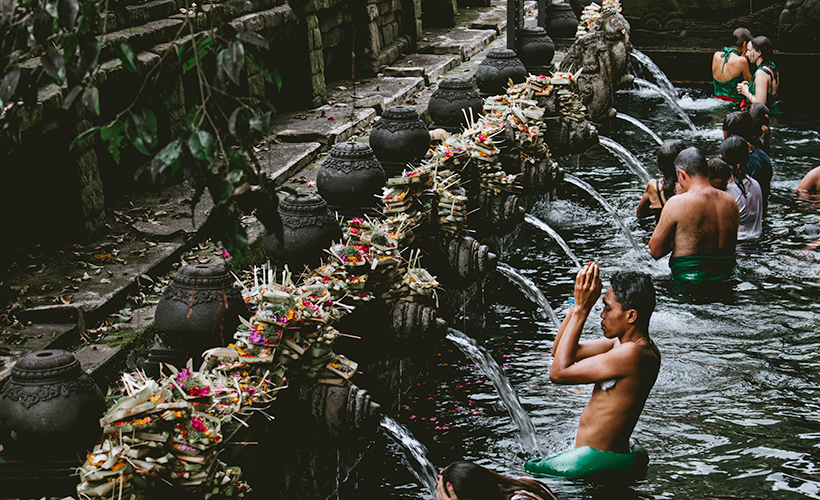
The bathing ritual
The ritual is aimed at cleansing your soul and warding off evil. It involves bathers entering the pool on the left side and standing in line in waist-deep water to purify themselves under the first water spout, saying a prayer or making an offer and splashing water over their heads three times. Once they have bathed under the first sprout, they join the line for the second sprout. They continue down the pool towards the right until they have moved through all the sprouts except two. These two sprouts are dedicated to cleansing the dead.
Visitors need to change into a special sarong and sash (different from the one you received when entering the temple) before entering the water. There are changing rooms and lockers for your personal things near the pools.
Remember to always stay respectful of other worshippers.
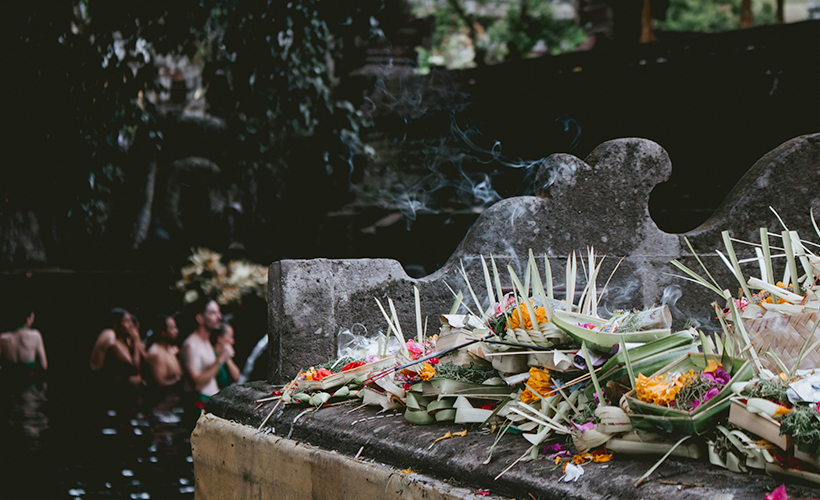
Tirta Empul is open between 7AM and 5PM every day and can get very crowded. There are usually less crowds early in the morning.
The temple is also a site where festivals are held. It gets very crowded during these festival times, and you might want to schedule your visit at other times. On the other hand, you might want to (respectfully) observe these festivals.
You can have a truly authentic Balinese experience at the Tirta Empul temple. Besides getting an intimate glimpse into the religious practices, you can also participate to cleanse your soul and ward off evil. If you choose to do so, remember to do it respectfully.


